Considering a fresh look for your roof? Painting roof tiles is not merely an aesthetic decision; it also serves as a practical solution for enhancing protection and extending the lifespan of the roof. Engaging in a DIY renovation like this can be both rewarding and cost-effective. This article delves into the rationale for painting roof tiles, the various types of tiles that can be painted, and the essential tools and materials required for the task, including recommendations from roofing professionals. It offers guidance on the preparation and painting processes, ensuring that your roof maintains an attractive appearance while enduring the test of time. Furthermore, you will learn effective strategies for maintaining your newly painted roof to ensure its longevity for years to come, including tips from the National Federation of Roofing Contractors.

Contents
Painting roof tiles presents a practical solution for homeowners aiming to enhance the aesthetic appeal of their roofs while simultaneously providing durable protection against various environmental factors, making it a cost-effective solution. This cost-effective approach is often chosen during renovations, as it can substantially improve the overall exterior appearance of the home.
Experts offer valuable insights into the painting process and emphasise the advantages of utilising high-quality roof tile paint, including weather-resistant and acrylic options, which are crucial for long-term roof maintenance and the enhancement of property value.
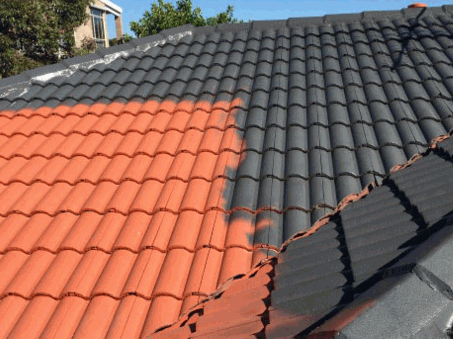
Homeowners may consider painting roof tiles for various reasons, primarily to enhance the overall aesthetic appeal of their residences and to increase property value during renovations, which may lead to an increased property value of up to £120,000.
This approach enables a customised appearance that aligns with individual preferences while also offering functional advantages, such as improved thermal efficiency and increased protection against weather-related damage.
Furthermore, the painting process can serve as a straightforward yet impactful home improvement project that many DIY enthusiasts find rewarding to undertake, especially when guided by an expert verdict from professionals in the field.
Changing the aesthetic of a roof can significantly alter the overall appearance of a home, enhancing its visual appeal and ensuring cohesion with the architectural style. By selecting the appropriate roof tile paint, homeowners have the opportunity to customise their roofs in a manner that reflects their personal preferences, whether through vibrant colours or subtle tones that accentuate the existing features of the residence. Paintmaster and Polycote offer a range of options for such customisation.
Beyond personal preference, the choice of roof tile colour plays a crucial role in influencing a home's kerb appeal. For instance, a well-maintained roof can significantly boost curb appeal and potentially increase the property value to £630,000. Homeowners should carefully consider how various shades interact with the façade and surrounding landscaping. For example, earthy tones such as terracotta or muted greens can create a harmonious appearance that complements natural settings, while bold colours like deep blue or rich red can make a striking statement against a neutral exterior.
Popular trends in roof tile colours often include those recommended by Homebuilding & Renovating Show and Today’s Media:
It is evident that a thoughtful selection of colour can yield transformative results, enhancing both aesthetic appeal and resale value. Platforms like Facebook Marketplace can be useful for sourcing these materials at competitive prices.
Protecting roof tiles from damage is a critical consideration for homeowners, as the appropriate paint can serve as a barrier against harsh weather conditions, moss growth, and other environmental factors. Roof Tile Coat and PremFlex are known for their high-quality protective paints. By applying high-quality weather-resistant paint, homeowners can extend the lifespan of their roofs and reduce the necessity for frequent maintenance or expensive repairs, thereby safeguarding their investment.
Along with its protective qualities, roof tile paint offers benefits related to maintaining structural integrity and enhancing aesthetic appeal. Weather fluctuations can lead to accelerated wear and tear; however, with proper application, the paint provides the following advantages:
Regular inspections and maintenance are equally essential, as suggested by the Homebuilding & Renovating Show. By incorporating painting into a comprehensive roof restoration strategy, homeowners can not only protect their roofs but also minimise future expenses associated with repair work. This proactive approach ensures that the roof remains a strong defence against external threats, promoting longevity and providing peace of mind.

Not all roof tiles possess the same characteristics, and it is crucial for homeowners contemplating this renovation to understand which types can be effectively painted.
Concrete roof tiles, clay roof tiles, and metal roof tiles each exhibit distinct properties that influence their compatibility with tile paint and the preparation necessary prior to painting. Familiarity with these differences enables homeowners to make informed decisions regarding their roofing projects.
Concrete roof tiles are a widely favoured option among homeowners due to their durability and versatility, making them an excellent candidate for painting to enhance both aesthetic appeal and protective qualities.
The painting process for concrete tiles typically begins with a thorough cleaning and priming to ensure optimal adhesion and longevity of the roof tile paint, which can greatly improve roof maintenance over time. Homeowners should initiate this process by removing any accumulated dirt, debris, or moss from the roof using a high-pressure washer. Following the cleaning, it is crucial to apply a suitable primer specifically designed for concrete surfaces, as this promotes better bonding with the paint.
Once the tiles are primed, the application of high-quality exterior paint can offer numerous advantages, such as improved UV resistance and water repellency.
By adhering to these maintenance practices, homeowners can significantly extend the lifespan of their painted concrete tiles while retaining the roof's beauty and functionality for many years to come. Regular use of Roof Tile Coat can further enhance these benefits. It is advisable to consult the National Federation of Roofing Contractors for best practices.
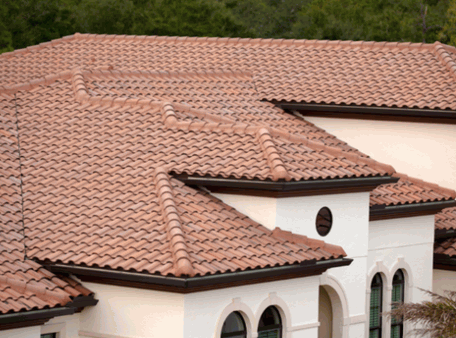
Clay roof tiles, recognised for their classic aesthetic and thermal efficiency, can also be painted to enhance their appearance and improve their functional benefits.
By choosing to paint these tiles, homeowners can achieve the dual benefit of revitalising the visual appeal of their roofing while simultaneously enhancing energy-saving features. Notably, painting can increase thermal efficiency, contributing to long-term energy savings. With the appropriate selection of paint, the roof can attain a striking aesthetic through various colour options and reflect sunlight, resulting in improved energy efficiency and reduced cooling costs during warmer months.
To attain optimal results, it is advisable to utilise high-quality, breathable paints specifically formulated for clay surfaces. This ensures that moisture is permitted to escape while maintaining the structural integrity of the tiles.
In conclusion, painting clay roof tiles represents a practical investment that provides both immediate aesthetic enhancement and long-term energy savings.

Metal roof tiles are gaining increasing popularity due to their lightweight and durable properties, often seen in modern timber frame houses. The application of paint can further enhance their longevity and appearance, utilising a flexible coating that offers excellent colour retention. Brands such as Paintmaster provide suitable options for this purpose. It is essential to select the appropriate type of paint specifically designed for metal roofs to achieve optimal results and ensure long-term protection.
Along with their inherent durability, painted metal roof tiles provide remarkable aesthetic versatility, allowing homeowners to effortlessly customise the appearance of their homes. This customisation offers a wide array of choices in terms of colours and finishes that complement various architectural styles, as highlighted in the Homebuilding newsletter.
Therefore, when appropriately selected and maintained, painted metal roofing not only supports the structural integrity of the building but also enhances its overall kerb appeal.
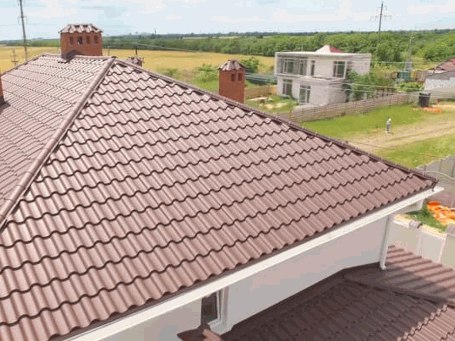
When undertaking a roof tile painting project, whether as part of a DIY renovation or a professional task, it is imperative to have the appropriate tools and materials available to ensure a successful outcome.
Essential items include:
Having all the necessary equipment will facilitate the painting process and contribute to achieving a professional finish.
A pressure washer serves as an essential tool for cleaning roof tiles, effectively removing dirt, debris, and moss to ensure a clean surface for paint application. Regular use of a pressure washer in roof maintenance not only prolongs the life of the roof tiles but also enhances the adhesion of the roof tile paint.
Along with its cleaning capabilities, this technique provides several advantages and is critical for maintaining the aesthetic appeal of the roof. Before painting, the use of a pressure washer clarifies the surface and helps in identifying potential issues such as cracked or missing tiles that require attention.
The following are some key benefits of this method:
Safety is of utmost importance. It is essential to use appropriate pressure settings to avoid damage and to wear protective gear during the process. Regular maintenance, including scheduled pressure washing, significantly contributes to the longevity and performance of roof tiles, establishing it as a vital component of any homeowner's maintenance plan.

Selecting the appropriate application tool, whether a paintbrush or a roller, is critical for achieving an even coat of roof tile paint. Paintbrushes are particularly effective for detailed work and edges, while rollers are advantageous for covering larger areas more efficiently, making them a practical choice for the primary painting process.
The choice of tool can significantly influence both the aesthetics and longevity of roof tiles. Utilising the correct application tool facilitates better adhesion and coverage, ensuring that every nook and cranny is adequately addressed, highlighting the tile painting benefits.
For instance, a paintbrush is ideal for accessing tight corners and intricate designs on tiled surfaces, which often highlight imperfections. In contrast, rollers are better suited for broad, flat areas, expediting the process while delivering a consistent finish.
Technique Tips: When employing a paintbrush, it is advisable to use short, controlled strokes to ensure precision and optimal coverage. For rollers, overlapping each stroke slightly is essential to avoid missed spots and to guarantee uniform paint application.
Application Methods: Begin at the top of the roof to prevent dripping, working methodically downwards. It is also important to consider the drying time between coats, especially under varying weather conditions.
Choosing the appropriate type of roof tile paint is vital; lighter shades can effectively reflect heat, while specific masonry paints can enhance durability against environmental elements.
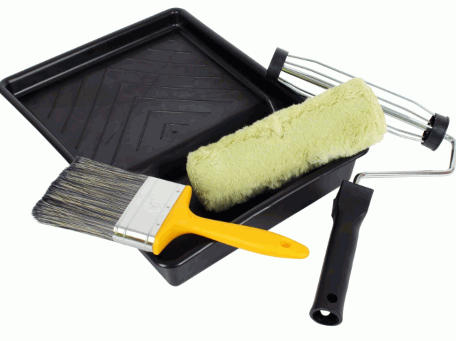
Selecting the appropriate roof tile paint is essential for ensuring durability and effectiveness in safeguarding the tiles against weather-related damage. Options such as weather-resistant paint and acrylic roof paint offer excellent coverage and long-lasting colour retention, making them ideal choices for homeowners seeking both aesthetic appeal and functional advantages.
A comprehensive understanding of the various types of roof tile paints available in the market can significantly influence the longevity of your roofing. When selecting the most suitable product, it is crucial to consider the material of the tiles—whether clay, concrete, or slate—as well as the specific environmental conditions they will endure.
These features not only enhance the visual appeal of the roof but also provide protection against excessive wear and tear, thereby ensuring a longer lifespan for your overall roofing investment.
The proper preparation of the roof is crucial to ensure a smooth painting process that yields optimal results. This involves a comprehensive cleaning of the roof to eliminate dirt and debris, effectively cleaning tiles for better adhesion, repairing any damaged tiles to prevent future complications, and applying a primer to enhance paint adhesion.
Adhering to these procedures not only improves the effectiveness of the paint application but also contributes to the long-term maintenance of the roof, ensuring your investment—ranging from £400 to £4,500—is protected.
Cleaning the roof is an essential preliminary step in the painting process, as it eliminates moss, dirt, and debris that could hinder paint adhesion. Using a pressure washer or scrub brush can effectively remove these obstacles, ensuring that the surface is adequately prepared for the application of roof tile paint.
To achieve optimal results, professional roof cleaning often recommends a variety of cleaning methods tailored to specific types of tiles. Effective tools may include:
Safety is of utmost importance; it is crucial to utilise non-slip footwear, employ work harnesses when necessary, and wear protective eyewear to safeguard against debris.
Failing to remove moss and other contaminants not only detracts from the aesthetic appeal of the roof but also poses a risk of structural damage over time. By routinely maintaining the surface, homeowners can prevent additional complications such as leaks or tile degradation, ultimately preserving the integrity and longevity of their roofing investment.
Look into: How To Clean Roof Tiles Before Painting
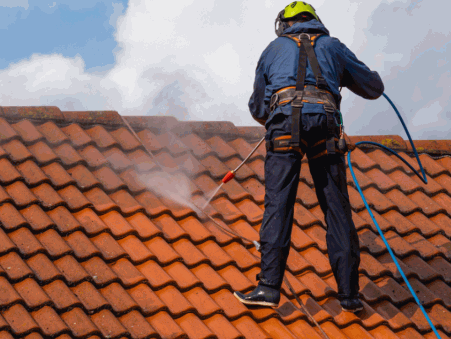
Before undertaking any painting work, it is essential to repair any damaged tiles to ensure the longevity of both the roof and the paint application. Expert assessments underscore the importance of addressing tile damage, as neglecting this aspect may lead to further complications, such as leaks or premature deterioration of the paint, ultimately resulting in significantly increased maintenance costs.
Identifying damaged roof tiles typically requires a visual inspection, during which homeowners should be vigilant for cracks, breaks, or other signs of wear. If tile damage is suspected, specialists recommend employing the following methods:
Addressing these repairs prior to painting is critical, as it enhances adhesion and minimises the risk of further damage.
By heeding expert recommendations, homeowners can significantly improve the overall efficacy of their roofing system, thereby extending its lifespan and preserving the value of their property.
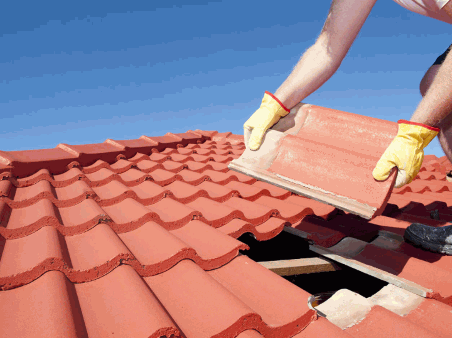
Priming the roof is a critical step that prepares the surface for paint application, thereby enhancing adhesion and ensuring a uniform finish. Employing a high-quality primer specifically designed for roof tiles can significantly improve the overall durability and effectiveness of the roof tile paint, ultimately facilitating a more successful painting process.
In terms of longevity, priming serves multiple purposes that extend beyond mere aesthetics. It effectively seals porous surfaces, preventing moisture infiltration and safeguarding against environmental elements. This not only contributes to an extended lifespan for the roof but also enhances the vibrancy of the paint colour applied subsequently.
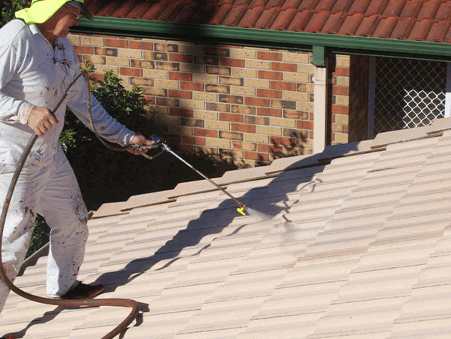
The painting process for roof tiles consists of several essential steps that ensure a smooth and effective application, especially for those engaging in a DIY renovation.
Initially, homeowners should apply the first coat of paint and allow it to dry completely before proceeding with a second coat to enhance durability and coverage. This approach not only results in a professional finish but also maximises the benefits of the chosen Roof Tile Coat, such as those offered by brands like Polycote or Paintmaster.
Applying the first coat of paint represents the initial step in the roof tile painting process, necessitating meticulous attention to ensure even coverage and proper adhesion. Homeowners may utilise a paintbrush or roller to systematically cover the surface, taking care to avoid drips and to achieve a consistent application of products like PremFlex or Paintmaster roof tile paint.
To attain optimal results, it is crucial to select the appropriate application tool that aligns with the specific type of paint being utilised. For example, a roller may be well-suited for covering larger areas, while a brush provides precision for edges and intricate designs.
The following techniques and tips should be considered:
Furthermore, it is important to be mindful of external conditions such as temperature and humidity, as these factors can significantly influence the drying time and overall finish of the application.

Allowing the first coat of paint to dry completely is essential in the painting process, as it ensures proper adhesion and prepares the surface for the application of the second coat. Homeowners should adhere to the manufacturer's recommendations regarding drying times, as environmental conditions can significantly impact this process.
When the initial layer dries adequately, it establishes a solid foundation that not only enhances the durability of the paint job but also improves the overall finish. Failing to allow this critical step to occur can result in a range of issues, including peeling, bubbling, and uneven texture.
Several factors influence drying times:
By recognising the importance of allowing sufficient drying time for the first coat, homeowners can achieve a high-quality finish that endures over time.
Once the first coat has dried, applying a second coat of paint is essential for achieving a durable and vibrant finish on roof tiles. This step enhances both the colour and protection provided by the roof tile paint, ensuring long-lasting results that contribute to effective roof maintenance.
When proceeding with the application of the second coat, it is vital to approach the task with precision and care. Begin by thoroughly cleaning the surface to eliminate any dust or debris that may have accumulated during the drying period. Utilising a high-quality paint roller or spray gun, apply the paint in even strokes, ensuring uniform coverage across the tiles.
Ensuring an even application allows for better penetration and adhesion, which subsequently enhances the protective layer against harsh environmental conditions.
Completing this crucial step not only enhances the aesthetic appeal of the roof but also significantly contributes to the preservation of the tiles, thereby extending their lifespan and reducing the need for frequent maintenance.
Maintaining painted roof tiles is crucial for preserving both their aesthetic appeal and functionality over time, thereby enabling homeowners to maximise their investment, as highlighted in various DIY and home renovation resources.
Regular inspections for damage, annual cleanings, and timely touch-ups of any chipped or faded areas are necessary to uphold the quality of the paintwork and the underlying roof tiles. These practices, recommended by the National Federation of Roofing Contractors, ultimately contribute to effective roof maintenance.
Regular inspections for damage are a crucial component of maintaining painted roof tiles, enabling homeowners to identify issues before they escalate into costly repairs. Experts recommend conducting thorough evaluations of the roof at least twice a year to ensure that both the paint and tiles remain in optimal condition. Early detection of potential issues, as discussed in home improvement forums like Today’s Media, can save significant time and financial resources over the long term.
During these inspections, it is essential to look for common signs of deterioration, including:
These indicators are critical, as they can significantly affect the longevity of the roof.
Seeking expert advice on appropriate roof maintenance practices not only extends the lifespan of the roof but also assists homeowners in proactively addressing potential problems, thereby securing the value and safety of their homes.
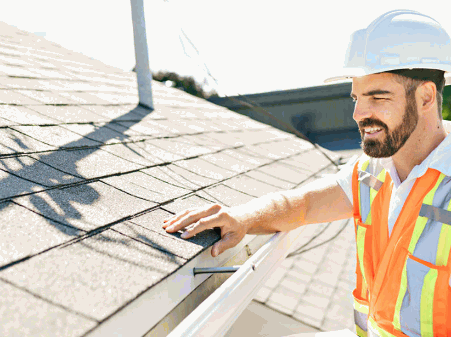
Cleaning the roof on an annual basis is essential for maintaining the integrity and appearance of painted roof tiles. This practice removes dirt, moss, and debris that can deteriorate both the paint and the tiles over time. A comprehensive cleaning regimen, as advised by roofing experts like Ellie Rimmer and James Lawrence, helps to prevent mould growth and ensures that the roof remains in optimal condition.
To effectively manage these painted surfaces, property owners should employ specialised cleaning methods that prioritise both safety and efficiency. While high-pressure washing is a common technique, it is vital to exercise caution to avoid damaging the tiles. Regular maintenance not only enhances the roof's aesthetics but also significantly extends its lifespan.
For moss removal, utilising a combination of warm soapy water and a soft-bristle brush is effective, allowing for meticulous attention without scratching the tile. Additionally, applying a moss inhibitor after cleaning can effectively prevent regrowth. Establishing a cleaning schedule every 12 months serves as a proactive measure to protect against extensive damage.
This methodical approach to roof maintenance promotes longevity and preserves visual appeal, thereby contributing significantly to the overall health of the property.
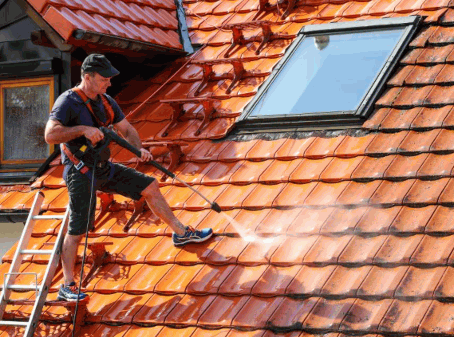
Touching up any chipped or faded areas of painted roof tiles is essential for preserving both the aesthetic appeal and protective qualities of the roofing. Using the same roof tile paint ensures consistency in colour and texture, thereby contributing to effective roof maintenance and enhancing the property’s kerb appeal, making it more attractive for resale or valuation, as seen on platforms like Facebook Marketplace.
Although identifying areas in need of touch-ups may initially appear daunting, it can be straightforward with careful observation. It is advisable to conduct a visual inspection of the roof in optimal daylight conditions to detect any discrepancies in colour or signs of wear, such as fading or chipping.
Using scaffolding or a ladder can facilitate this process by providing access to hard-to-reach sections. For a seamless repair, it is critical to select a roof tile paint that matches the existing surface.
Consider the following actionable strategies:
The application technique is equally important. Ensure that the surface is clean by removing all debris prior to application, and use a brush for detailed areas while opting for a roller on larger patches.
Ultimately, maintaining a cohesive appearance across all tiles not only preserves the integrity of the roof but also enhances the overall charm of the home’s exterior, ensuring that the property remains appealing and valuable in today’s real estate market.